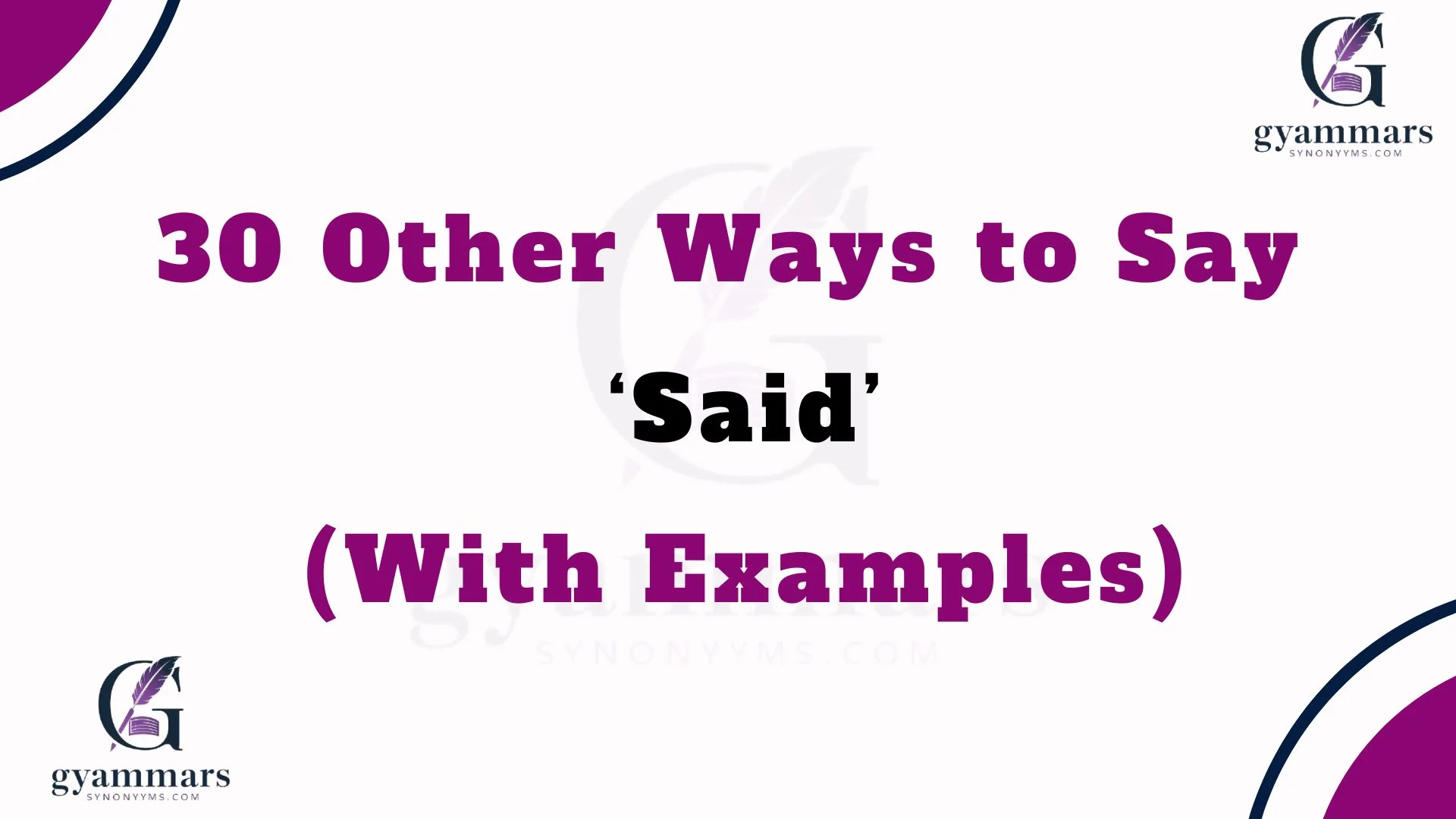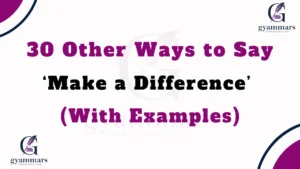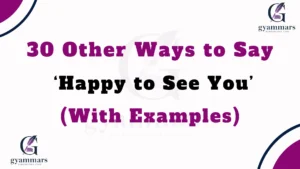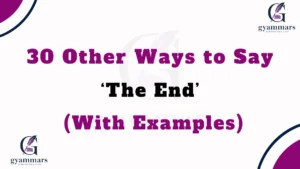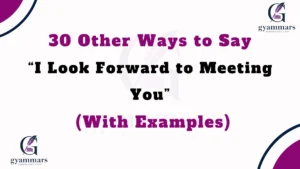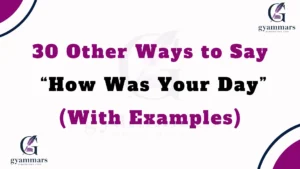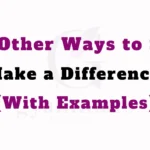Finding the right words matters when we want to communicate with warmth, care, and clarity. While the word “said” is simple and widely used, it can sometimes feel repetitive or lack emotional depth. Choosing alternatives to “said” can help us express tone, intention, and emotion in ways that feel more personal, empathetic, and engaging.
This guide will walk you through 30 meaningful alternatives, each explained with definitions, examples, and best-use tips so you can bring more life and authenticity into your writing.
What Does “Said” Mean?
The word “said” is a neutral reporting verb used to indicate speech. It doesn’t carry much emotional weight—it simply tells the reader that words were spoken. While useful for clarity, it often lacks nuance when you want to convey mood, tone, or feeling.
Is It Professional/Polite to Say “Said”?
Yes, “said” is both professional and polite. It is neutral and works in formal and informal writing. However, in contexts like storytelling, emails, or heartfelt writing, you may want alternatives that add warmth, enthusiasm, or compassion.
Pros and Cons of Using “Said”
Pros:
- Simple and universally understood
- Keeps writing clean and uncluttered
- Neutral (doesn’t distract the reader)
Cons:
- Can feel repetitive if overused
- Doesn’t express tone or emotion
- May lack the personal touch in warm communication
Synonyms For ‘Said’
- Affirmed
- Replied
- Whispered
- Confided
- Suggested
- Explained
- Assured
- Declared
- Remarked
- Stated
- Murmured
- Responded
- Observed
- Mentioned
- Noted
- Added
- Emphasized
- Promised
- Reassured
- Admitted
- Commented
- Recalled
- Agreed
- Concluded
- Answered
- Suggested Gently
- Pointed Out
- Exclaimed
- Questioned
- Encouraged
1. Affirmed
Definition: To state something confidently and positively.
Explanation: This conveys certainty and assurance—a stronger alternative when someone is speaking with conviction.
Scenario Example: “She is safe,” he affirmed with a gentle smile.
Best Use: When the speaker is providing reassurance or certainty.
Tone: Confident, supportive.
Additional Notes: Works well in caring or reassuring conversations.
2. Replied
Definition: To respond to a statement or question.
Explanation: Suggests a direct answer or continuation of dialogue.
Scenario Example: “I understand your concern,” she replied softly.
Best Use: When showing dialogue flow.
Tone: Neutral, thoughtful.
Additional Notes: Good for natural back-and-forth communication.
3. Whispered
Definition: To speak softly and quietly.
Explanation: Indicates gentleness, secrecy, or intimacy.
Scenario Example: “It will be okay,” he whispered in the dark.
Best Use: When showing comfort, closeness, or tenderness.
Tone: Gentle, intimate.
Additional Notes: Adds warmth and vulnerability to writing.
4. Confided
Definition: To share something in trust.
Explanation: Conveys trust, openness, and vulnerability.
Scenario Example: “I’ve never told anyone this,” she confided.
Best Use: In personal, heartfelt conversations.
Tone: Trusting, tender.
Additional Notes: Best in intimate or emotional dialogue.
5. Suggested
Definition: To offer an idea or recommendation.
Explanation: Shows gentle guidance or advice.
Scenario Example: “Maybe we should take a walk,” she suggested kindly.
Best Use: In collaborative or caring communication.
Tone: Gentle, thoughtful.
Additional Notes: Polite and considerate, never forceful.
6. Explained
Definition: To make something clear or understandable.
Explanation: Shows patience and care in communication.
Scenario Example: “This is how it works,” he explained calmly.
Best Use: When clarity or teaching is needed.
Tone: Helpful, patient.
Additional Notes: Conveys respect and attentiveness.
7. Assured
Definition: To comfort by giving confidence.
Explanation: Used when offering reassurance.
Scenario Example: “You are not alone,” she assured him warmly.
Best Use: When giving support and encouragement.
Tone: Compassionate, comforting.
Additional Notes: Perfect for empathy-driven writing.
8. Declared
Definition: To state something firmly and openly.
Explanation: Adds strength and conviction.
Scenario Example: “This will work,” he declared.
Best Use: In strong, determined statements.
Tone: Bold, assertive.
Additional Notes: Use sparingly to emphasize confidence.
9. Remarked
Definition: To comment casually.
Explanation: Suggests light, passing statements.
Scenario Example: “That’s interesting,” she remarked.
Best Use: For casual dialogue or observations.
Tone: Neutral, conversational.
Additional Notes: Keeps the tone light and easy.
10. Stated
Definition: To say something clearly and directly.
Explanation: Straightforward and formal.
Scenario Example: “We begin at noon,” he stated.
Best Use: In professional or formal settings.
Tone: Clear, official.
Additional Notes: Neutral, works well in structured writing.
11. Murmured
Definition: To speak softly, often with emotion.
Explanation: Expresses gentleness, affection, or quietness.
Scenario Example: “I love this moment,” she murmured.
Best Use: In romantic or tender contexts.
Tone: Soft, affectionate.
Additional Notes: Creates an intimate atmosphere.
12. Responded
Definition: To answer a question or statement.
Explanation: Simple, functional—slightly more formal than “replied.”
Scenario Example: “Yes, I agree,” she responded.
Best Use: For neutral dialogue flow.
Tone: Balanced, polite.
Additional Notes: Useful in professional communication.
13. Observed
Definition: To note something aloud.
Explanation: Suggests thoughtful awareness.
Scenario Example: “That’s unusual,” he observed.
Best Use: When pointing out details.
Tone: Calm, thoughtful.
Additional Notes: Adds depth to dialogue.
14. Mentioned
Definition: To bring something up casually.
Explanation: Light and non-pressuring.
Scenario Example: “I heard about the change,” she mentioned.
Best Use: For casual notes in conversation.
Tone: Easygoing, polite.
Additional Notes: Keeps the tone gentle.
15. Noted
Definition: To acknowledge or point out.
Explanation: Suggests awareness or reminder.
Scenario Example: “That’s important,” she noted.
Best Use: For recognition or reminders.
Tone: Calm, observant.
Additional Notes: Slightly more formal.
16. Added
Definition: To include more information.
Explanation: Shows dialogue continuation or expansion.
Scenario Example: “And one more thing,” she added.
Best Use: In conversational storytelling.
Tone: Smooth, conversational.
Additional Notes: Keeps the flow natural.
17. Emphasized
Definition: To stress importance.
Explanation: Makes something stand out.
Scenario Example: “This part matters most,” she emphasized.
Best Use: When highlighting significance.
Tone: Serious, intentional.
Additional Notes: Adds weight to dialogue.
18. Promised
Definition: To commit sincerely.
Explanation: Suggests loyalty, care, and trust.
Scenario Example: “I’ll always be here,” he promised.
Best Use: In emotional, supportive dialogue.
Tone: Warm, caring.
Additional Notes: Adds emotional depth.
19. Reassured
Definition: To comfort with confidence.
Explanation: Similar to “assured,” but softer and warmer.
Scenario Example: “You’ll be fine,” she reassured.
Best Use: For comforting someone’s worries.
Tone: Gentle, caring.
Additional Notes: Perfect for empathetic writing.
20. Admitted
Definition: To acknowledge something openly.
Explanation: Shows honesty or vulnerability.
Scenario Example: “I was nervous,” she admitted.
Best Use: In confessions or truthful dialogue.
Tone: Honest, personal.
Additional Notes: Adds realism and humility.
21. Commented
Definition: To make a remark.
Explanation: Neutral, works for casual talk.
Scenario Example: “That’s unusual,” she commented.
Best Use: For light observations.
Tone: Conversational, neutral.
Additional Notes: Keeps dialogue flowing.
22. Recalled
Definition: To remember and share.
Explanation: Suggests memory and storytelling.
Scenario Example: “I remember the day,” she recalled.
Best Use: In reflective or nostalgic moments.
Tone: Warm, reflective.
Additional Notes: Adds depth to personal stories.
23. Agreed
Definition: To express alignment.
Explanation: Shows harmony in conversation.
Scenario Example: “Yes, that’s true,” she agreed.
Best Use: To show understanding and unity.
Tone: Positive, affirming.
Additional Notes: Enhances connection.
24. Concluded
Definition: To finish with a final thought.
Explanation: Marks the end of reasoning or dialogue.
Scenario Example: “And that’s final,” he concluded.
Best Use: In closure moments.
Tone: Firm, clear.
Additional Notes: Signals finality.
25. Answered
Definition: To respond directly.
Explanation: A simple, functional alternative.
Scenario Example: “Yes, of course,” she answered.
Best Use: For direct responses.
Tone: Neutral, polite.
Additional Notes: Works in professional and casual use.
Read More:30 Other Ways to Say “Happy Valentine’s Day” (With Examples)
26. Suggested Gently
Definition: To recommend kindly.
Explanation: Adds softness and empathy to “suggested.”
Scenario Example: “Maybe rest a little,” she suggested gently.
Best Use: In caring advice.
Tone: Warm, considerate.
Additional Notes: Great for empathetic tone.
27. Pointed Out
Definition: To call attention to something.
Explanation: Practical and direct.
Scenario Example: “That’s a mistake,” she pointed out.
Best Use: For corrections or clarifications.
Tone: Helpful, straightforward.
Additional Notes: Works well in teaching contexts.
28. Exclaimed
Definition: To speak with excitement.
Explanation: Adds energy and enthusiasm.
Scenario Example: “That’s amazing!” she exclaimed.
Best Use: When showing joy or surprise.
Tone: Excited, lively.
Additional Notes: Brings dialogue to life.
29. Questioned
Definition: To ask in curiosity.
Explanation: Suggests uncertainty or seeking clarity.
Scenario Example: “Are you sure?” she questioned.
Best Use: For inquiring dialogue.
Tone: Curious, thoughtful.
Additional Notes: Adds doubt or wonder.
30. Encouraged
Definition: To inspire with words.
Explanation: Shows support and positivity.
Scenario Example: “You can do this,” he encouraged.
Best Use: In uplifting conversations.
Tone: Warm, motivating.
Additional Notes: Perfect for inspiring confidence.
Conclusion
Using alternatives to “said” allows your writing to feel warmer, more expressive, and emotionally connected. Instead of repeating the same neutral word, you can choose words that capture tone, care, and intention—making your communication feel truly personal and meaningful.
FAQs:
1. Why should I avoid overusing “said”?
Because it can make writing repetitive and flat.
2. Are these alternatives suitable for professional writing?
Yes, but choose wisely—words like “explained” or “stated” fit best in formal contexts.
3. What’s the most empathetic alternative?
“Reassured,” “encouraged,” and “promised” carry warm, caring tones.
4. Can I use these in creative writing?
Absolutely—they bring stories and dialogue to life.
5. Should I replace every “said”?
No. Balance is key—use alternatives when tone or emotion matters.

“Emma Brooke at Grammar Synonyms is your trusted source for mastering the art of language. Whether you’re looking for the perfect synonym, refining your grammar, or searching for that one ideal phrase, we’ve got you covered. With a wealth of tools and resources, Emma Brooke brings you creative solutions for all your writing needs, making sure your words always hit the mark. Unlock a world of language possibilities and elevate your writing with ease.”
